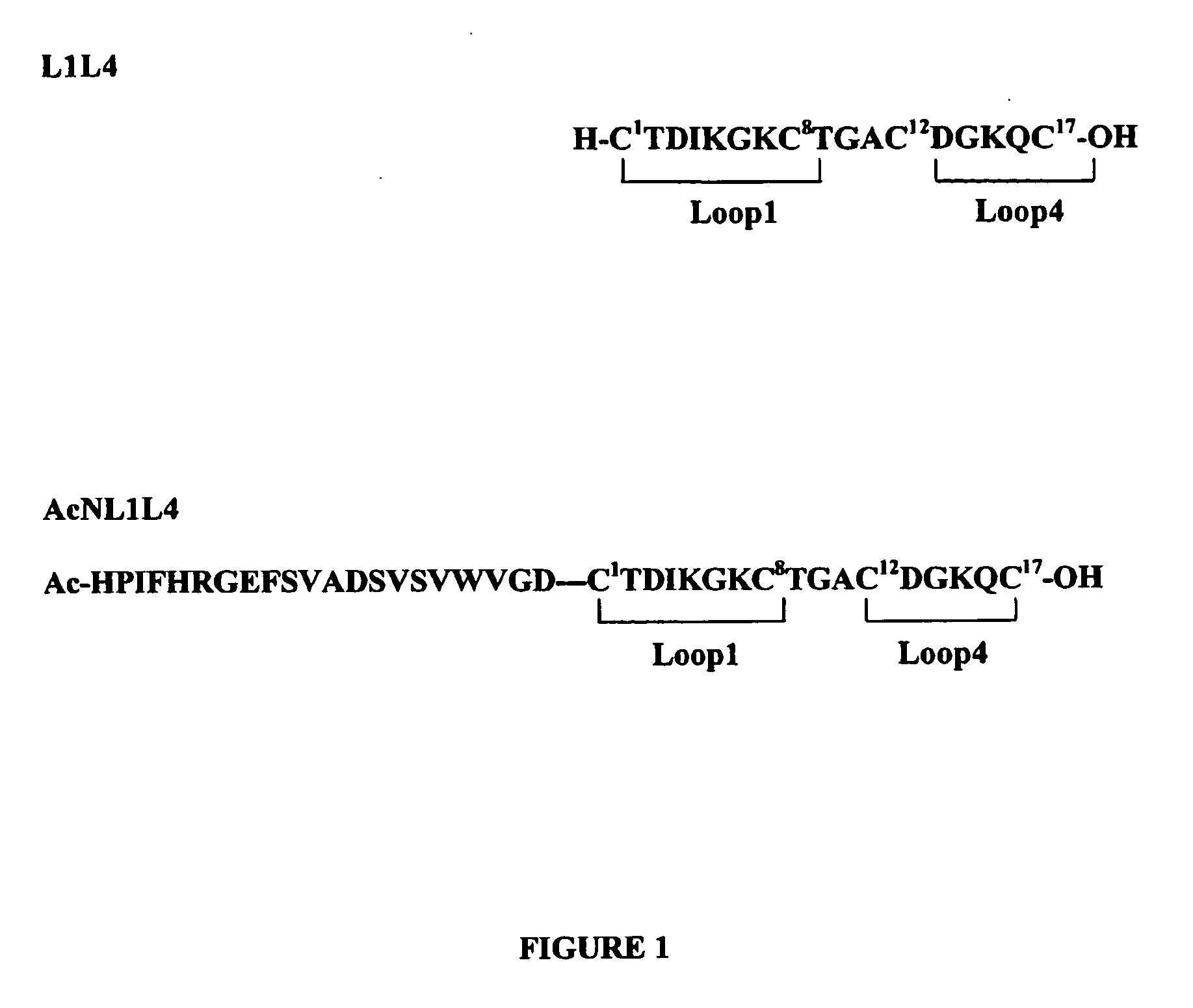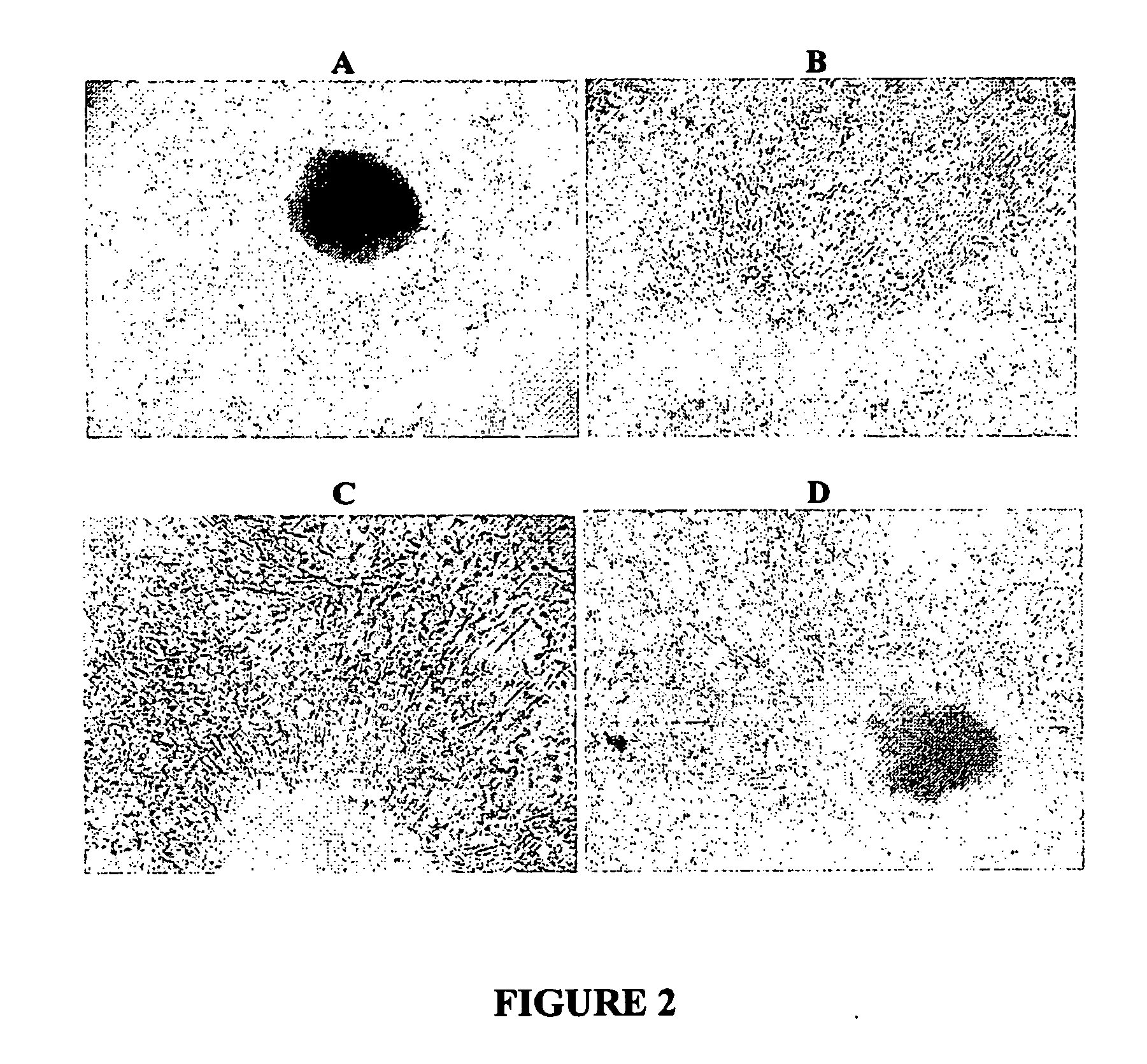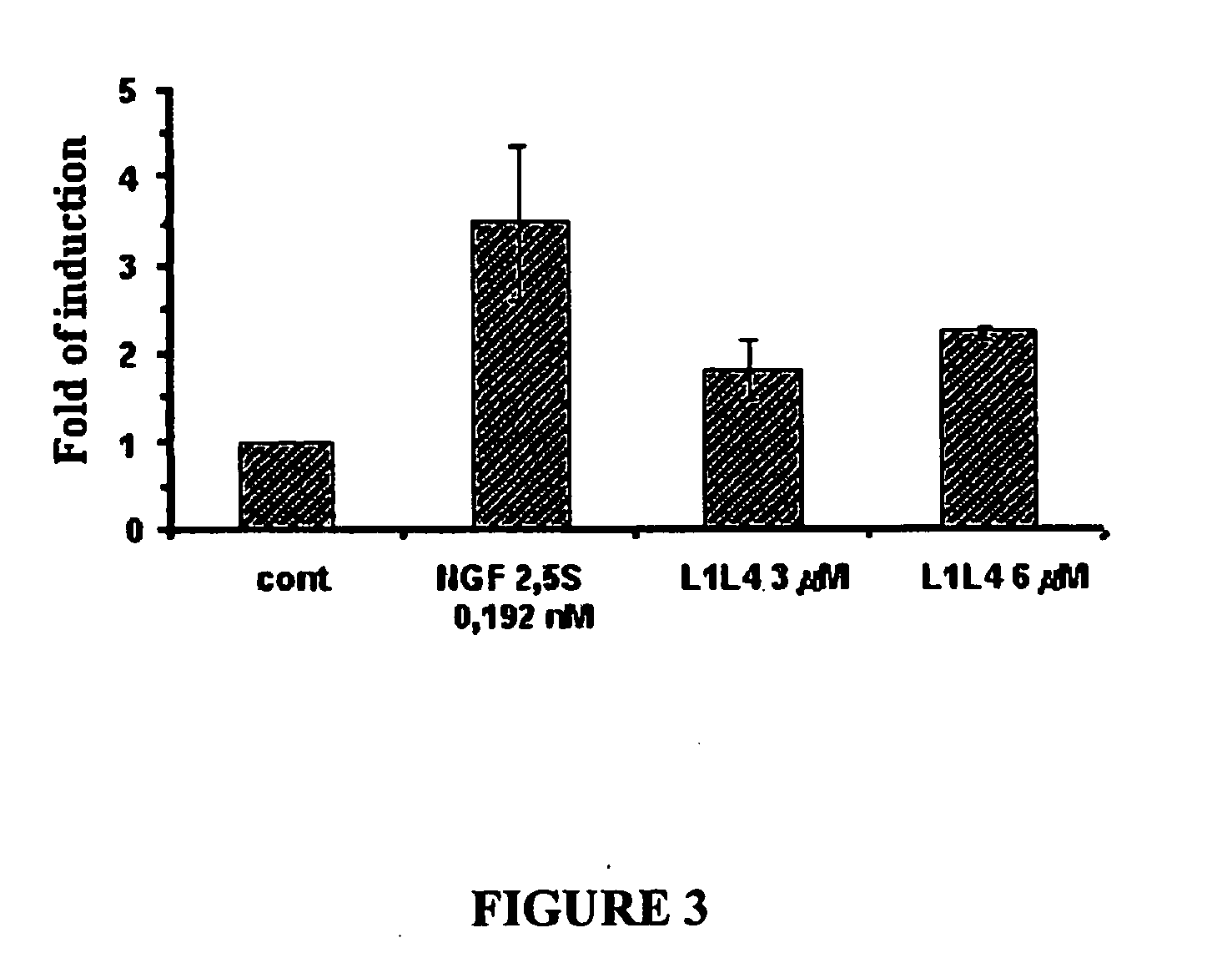Heterodimeric Peptide Compounds Displaying Ngf Activity and Their Use to Treat Neurodegenerative Disorders
a technology of heterodimeric peptides and neurodegenerative disorders, which is applied in the direction of growth factors/regulators, animal/human proteins, cyclic peptide ingredients, etc., can solve the problems of restricted penetration of the central nervous system, no effect on neuronal cells, and preventing the use of proteins
- Summary
- Abstract
- Description
- Claims
- Application Information
AI Technical Summary
Benefits of technology
Problems solved by technology
Method used
Image
Examples
example 1
Chemical Synthesis of Peptide L1L4
[0047]The peptide having the sequence as reported in FIG. 1, and named L1L4, was synthesized using Fmoc solid phase strategy followed by disulphide bridge formation in solution. The solid phase synthesis was performed to obtain the linear precursor of L1L4. The synthesis was carried out with Fmoc-Cys(Acm)-Wang resin (substitution 0.60 mmol g−1) to reduce the racemization level due to the esterification of protected cysteine residue onto the resin. In order to obtain the selective formation of the two disulphide bridges (Cys1 / Cys8 and Cys12 / Cys17) S-Trt TFA-labile protecting group for Cys1 and Cys8 and S-Acm group for the remaining two Cys residues were used.
[0048]The deprotection step (removal of the Fmoc group) was performed with 30% piperidine in DMF and active ester coupling reactions were performed using HBTU (4 equivalents) as coupling reagent and DIEA (8 equivalents) in DMF. Each coupling was repeated twice and monitored by Kaiser test.
[0049]T...
example 2
Chemical Synthesis of Peptides AcL1L4 and AcNL1L4
[0055]The peptide AcL1L4 was synthesized according to the above reported procedure for the non-acetylated compound. At the end of the synthesis before the cleavage / deprotection step the peptide N-terminus was acetylated on the resin using Ac2O / DIEA / DMF (2.6:4.8:92.6 v / v / v). The final product was identified by MALDI-T of spectrometry which gave the expected molecular ion peak [M-H+] of 1772 Da.
[0056]The peptide AcNL1L4, whose sequence is reported in FIG. 1, was synthesized using Fmoc solid phase strategy followed by disulphide bridge formation in solution. The solid phase synthesis was performed to obtain the linear precursor of AcNL1L4. The synthesis was carried out with Fmoc-Cys(Acm)-Wang resin (substitution 0.60 mmol g−1) to reduce the racemization level due to the esterification of protected cysteine residue onto the resin. In order to obtain the selective formation of the two disulphide bridges (Cys1 / Cys8 and Cys12 / Cys17) S-Trt TF...
example 3
Determination of trkA Phosphorylation
[0065]The biological activity of the peptides of invention was determined by analyzing their ability to induce the phosphorylation of the high affinity receptor trkA. Immunoblot analysis of trkA phosphorylation in PC12 cells was carried out as previously described (Colangelo et al., 1994). PC12 cells were treated for 5 min with the culture medium alone, or containing the NGF peptides (1-50 μM), or 2.5S NGF (from 0.096 to 0.384 nM), washed and lysed at 4° C. in 1 ml of RIPA buffer (50 mM Tris pH 7.5, 150 mM NaCl, 1% Nonidet P-40, 0.5% sodium deoxycholate, 0.1% SDS and 1 mM DTT) containing protease inhibitors (2 mM PMSF, 1 μg / ml leupeptin, 5 μg / ml aprotinin) and phosphatase inhibitors (10 mM NaF and 1 mM sodium orthovanadate). Lysates (300 μg of total proteins) were incubated overnight at 4° C. with 2 μg of rabbit anti pan-trk IgG (C-14, Santa Cruz Biotechnology, CA) followed by incubation with protein A-Sepharose (Sigma) for additional 2 hr at 4° ...
PUM
 Login to View More
Login to View More Abstract
Description
Claims
Application Information
 Login to View More
Login to View More - R&D
- Intellectual Property
- Life Sciences
- Materials
- Tech Scout
- Unparalleled Data Quality
- Higher Quality Content
- 60% Fewer Hallucinations
Browse by: Latest US Patents, China's latest patents, Technical Efficacy Thesaurus, Application Domain, Technology Topic, Popular Technical Reports.
© 2025 PatSnap. All rights reserved.Legal|Privacy policy|Modern Slavery Act Transparency Statement|Sitemap|About US| Contact US: help@patsnap.com



